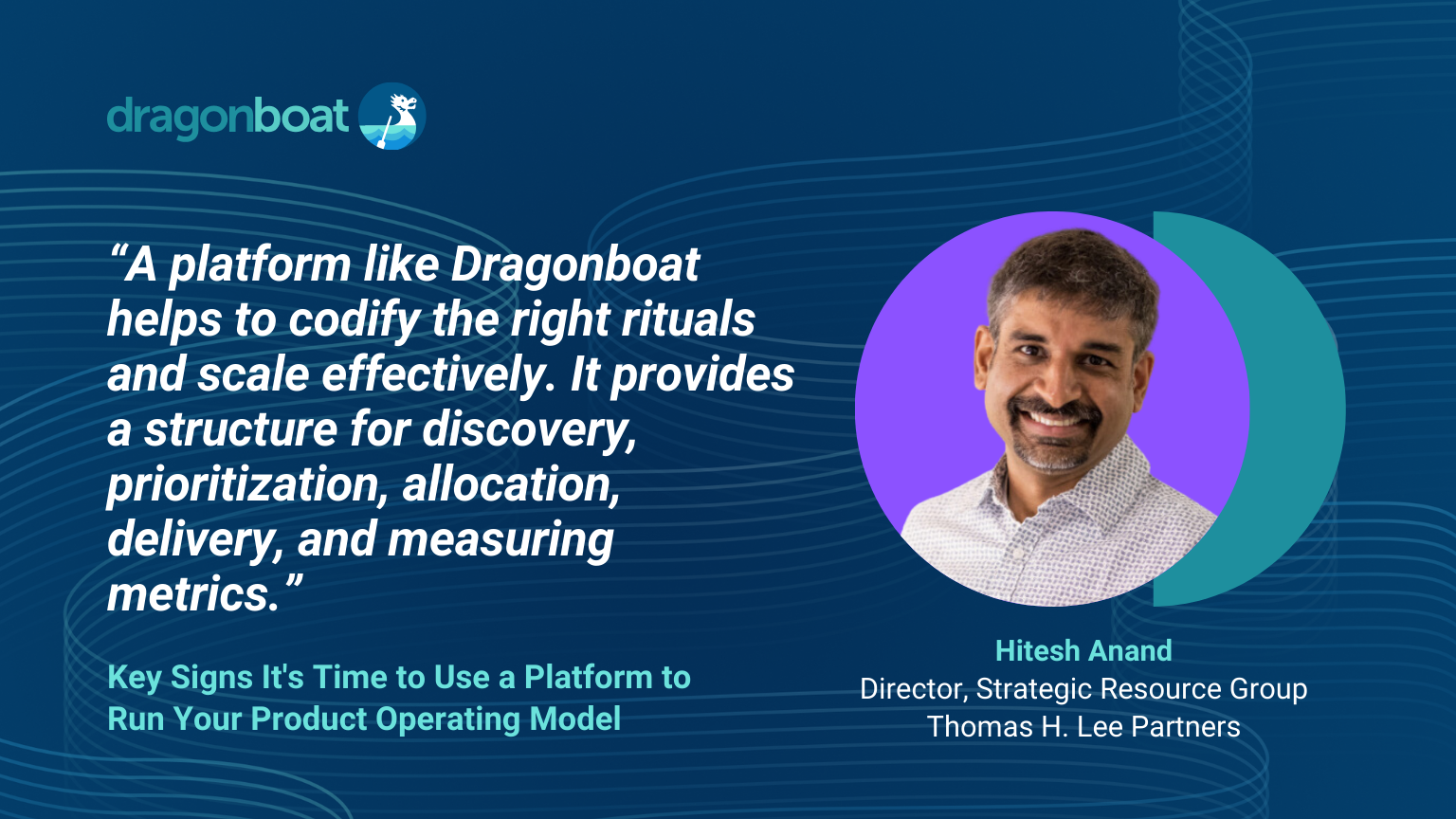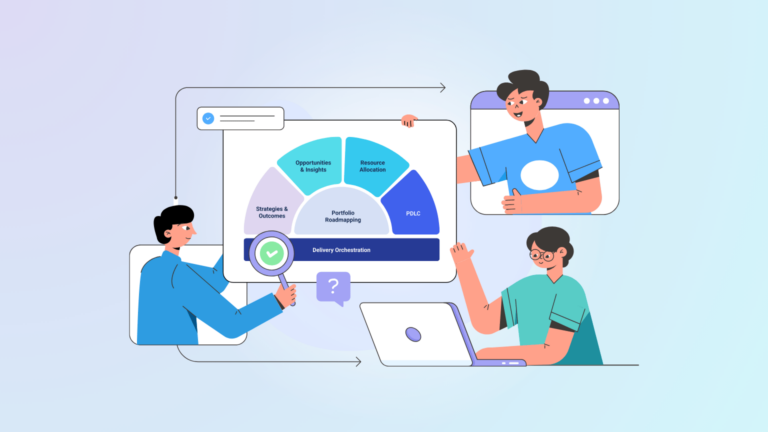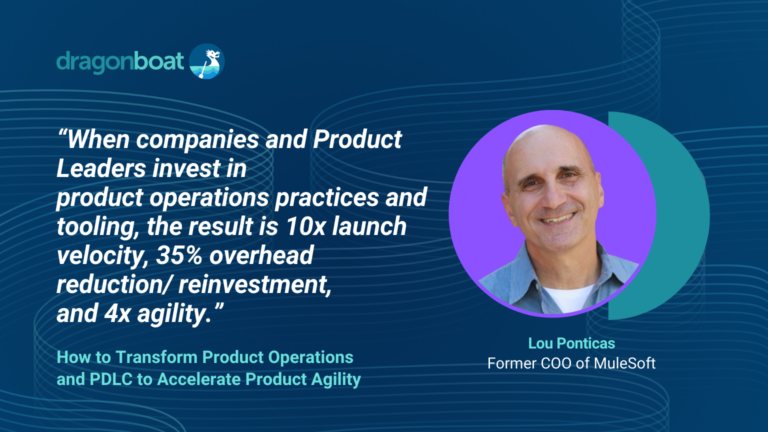In a recent Dragonboat CPO series webinar, Hitesh Anand, Director at Thomas H. Lee Partners, shared some great insights about running a successful product operating model. The big takeaway? You need a dedicated product operations platform to manage and optimize it. Here’s a quick rundown of why that’s crucial and why other key elements alone won’t cut it.
Key Takeaways
Spotting and Fixing Issues Early
Hitesh mentioned that signs of dysfunction like team misalignment, strategy disconnects, and silos are common. A platform gives you a centralized system where everyone can stay aligned and work towards the same goals, making it easier to spot and fix issues early on.
“People are always the first sign that you have a problem in your product operating model. The right number of people, processes, and enablers are key to an effective product operating model.”
– Hitesh Anand, Director, Thomas H. Lee Partners
Turning Strategy Into Action
It’s one thing to have a great strategy, but executing it is a different ballgame. Hitesh emphasized that without a structured approach, even the best strategies can fall apart. A product operations platform like Dragonboat help break down strategic goals into manageable tasks, allocate resources efficiently, and track progress in real time.
“Do you have an overarching product strategy? Do you have a notion of diagnosis, a problem area, and focus for next year, and the next three years?”
– Hitesh Anand, Director, Thomas H. Lee Partners
Boosting Cross-functional Collaboration
Silos are a killer for productivity. Different teams working in isolation leads to miscommunication and inefficiencies. A platform integrates various tools and workflows, fostering better communication and collaboration across departments.
Better Resource Allocation and Planning
Many companies struggle with accurate capacity planning, leading to overworked or idle teams. A platform designed to help you orchestrate your product operating model provides insights into resource availability and project demands, ensuring better planning and allocation. This keeps productivity high and workloads balanced.
“Only 23% of companies have accurate capacity planning, meaning they either overcommitted or under-committed.”
– Hitesh Anand, Director, Thomas H. Lee Partners
Tracking Metrics and Measuring Success
Tracking the right metrics is key to understanding product performance. Hitesh stressed the importance of good telemetry and metrics. A platform centralizes all data, offering comprehensive analytics and reporting, helping teams measure success, identify areas for improvement, and make data-driven decisions.
Why Other Cornerstones Aren’t Enough
While having a clear strategy, skilled people, and efficient processes are essential, they’re not enough by themselves. Here’s why:
- Strategy Without Execution: A great strategy needs proper execution. Without a platform to manage and track progress, your strategic goals might stay just that—goals.
- Skilled People Without Tools: Even the best teams need the right tools to perform well. Without a platform to streamline workflows and provide insights, they can struggle to deliver results efficiently.
- Processes Without Integration: Good processes need to be integrated across the organization. A platform ensures everything works together seamlessly, boosting overall productivity.
A dedicated product operations platform is a must-have to operationalize a product operating model for success. By addressing key dysfunctions, facilitating execution, enhancing collaboration, optimizing resource allocation, and providing robust metric tracking, a platform like Dragonboat makes your product operating model not just functional, but highly effective.
For more insights and to see how Dragonboat can transform your product operations, book a demo today.



